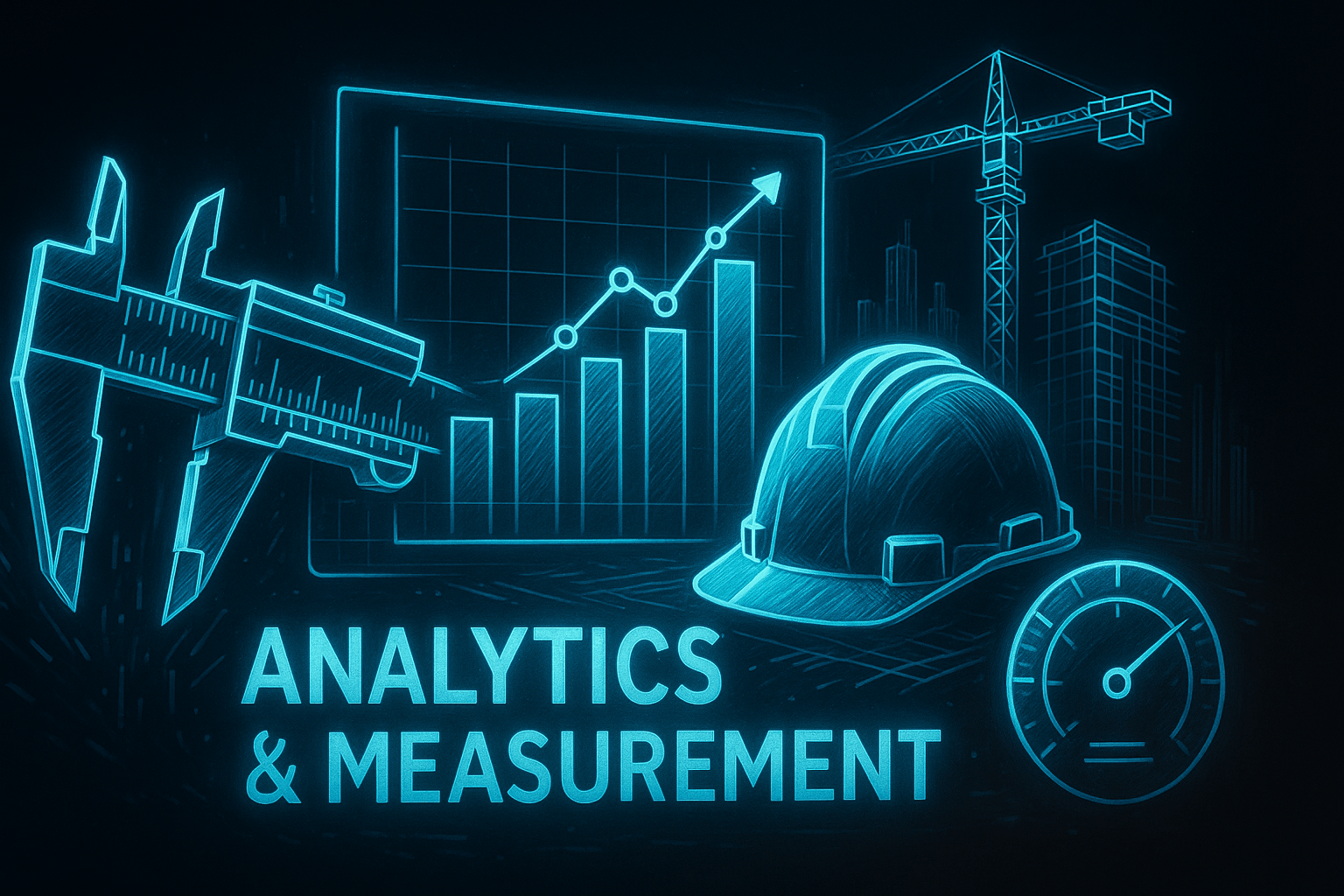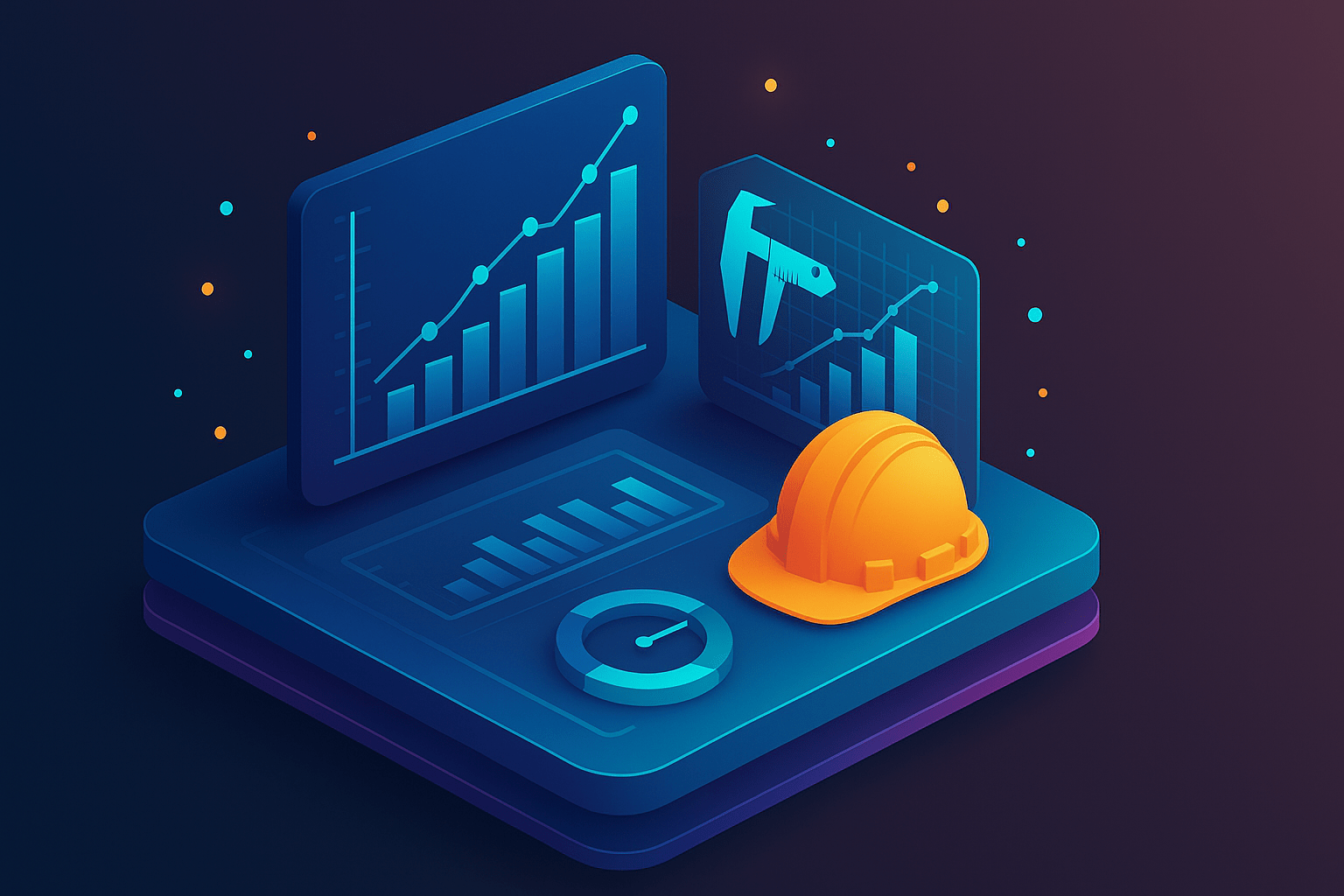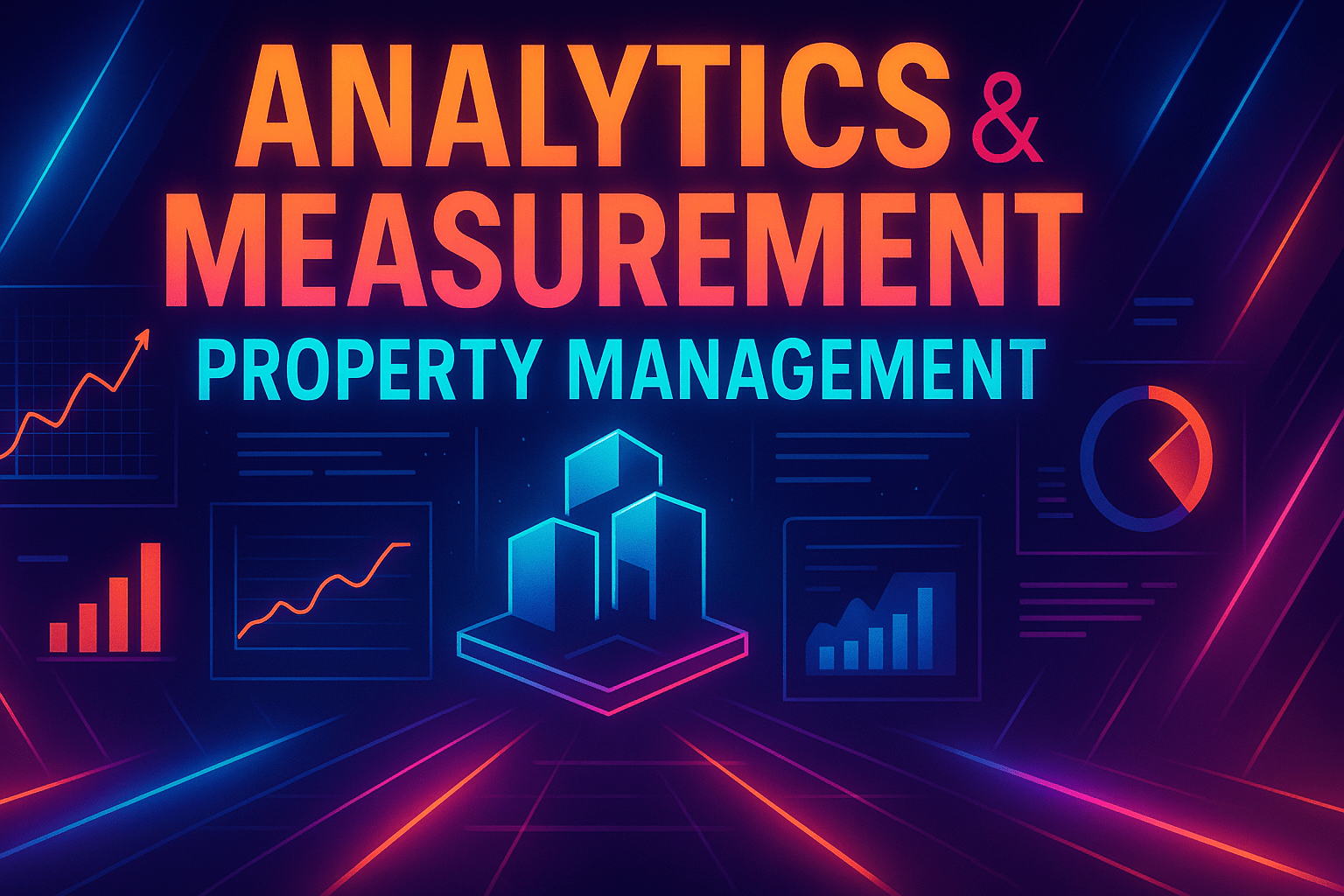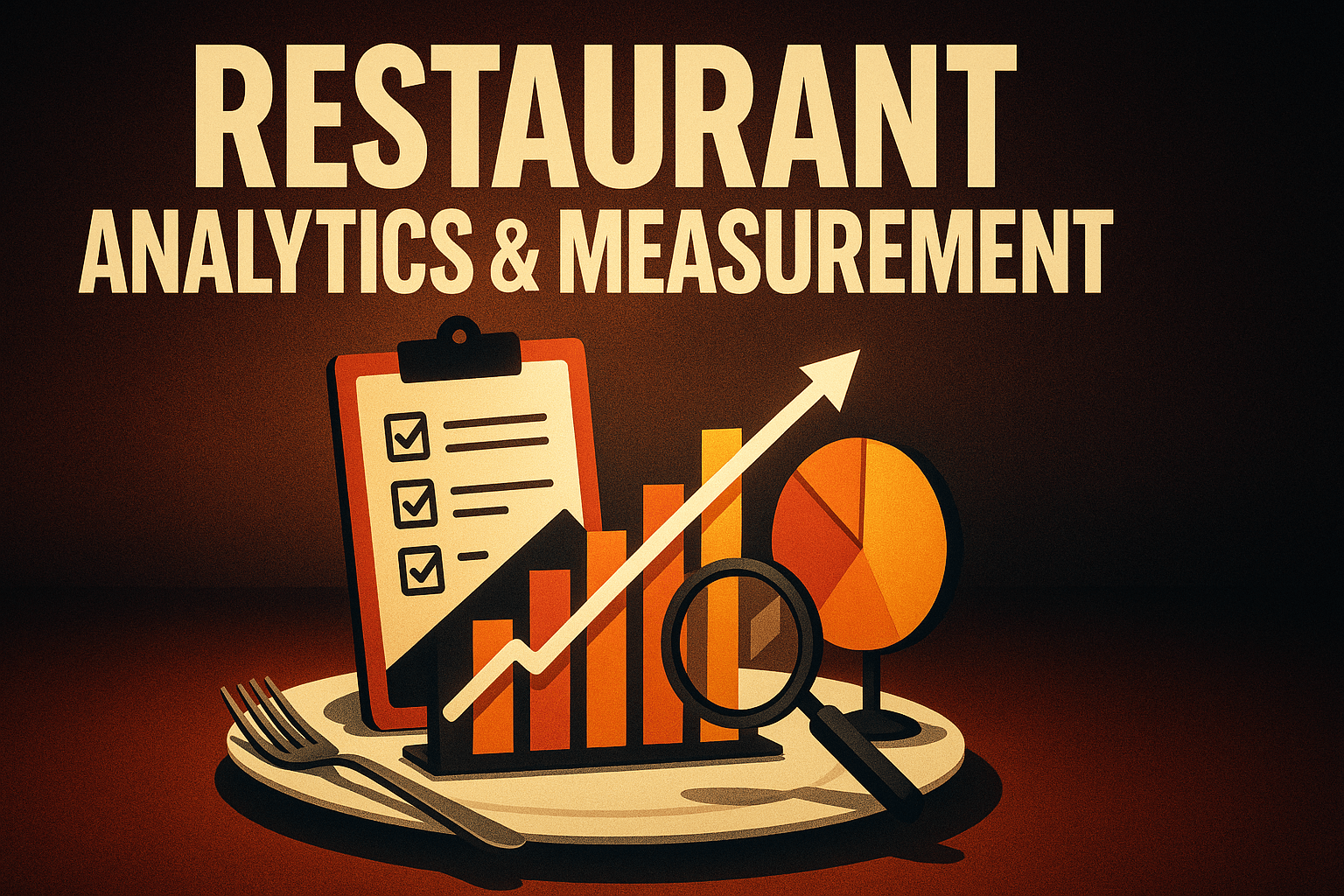Analytics & Measurement for Construction Contractors: Data-Driven Growth Strategies That Work
by Design Delulu Editorial · October 18, 2025

Smart, fast, and measurable. Here's how analytics & measurement helps Construction Contractors win.
Construction contractors operate in one of the most competitive, margin-sensitive industries where a single miscalculation can erase profitability for an entire quarter. Without reliable analytics and measurement systems, you're bidding blind, chasing unqualified leads, and watching marketing budgets disappear into channels that don't convert. The stakes are too high for guesswork.
Modern construction contractors need data-driven decision-making frameworks that connect marketing investments directly to project wins, qualified pipeline, and revenue growth. Analytics and measurement isn't just about tracking website visits—it's about understanding which lead sources generate the highest-value contracts, which content moves prospects through your sales cycle faster, and how to allocate budgets for maximum ROI. When implemented correctly, measurement systems transform scattered data into actionable intelligence that drives predictable, scalable growth.

Why Construction Contractors Need Specialized Analytics & Measurement
The construction contractor industry presents unique measurement challenges that generic analytics setups simply can't handle. Your sales cycles span months, not days. Lead values vary dramatically—from $15,000 residential remodels to $2M commercial builds. Offline conversions matter as much as online ones, and attribution gets messy when prospects research online, call your office, visit job sites, then sign contracts weeks later.
Traditional analytics tools fail construction contractors because they're built for e-commerce, not complex B2B and B2C hybrid funnels. You need measurement systems that track:
- Multi-touch attribution: Which touchpoints influenced a $500K contract—the initial blog post, the project gallery, the estimate request form, or the follow-up call?
- Offline conversion tracking: Connecting phone inquiries, job site visits, and in-person estimates back to original marketing sources
- Project-level profitability: Not just tracking leads, but measuring which lead sources generate the most profitable projects
- Seasonal patterns: Understanding how weather, economic cycles, and industry trends impact your pipeline
- Geographic performance: Which service areas, zip codes, or neighborhoods deliver the highest ROI
Without these capabilities, you're making six-figure marketing decisions based on incomplete information. The contractor who invests $50,000 in Facebook ads without proper measurement might think they're generating leads, when in reality their highest-value clients are coming from Google Maps and local SEO—channels they're underfunding.
The Real Cost of Poor Measurement
Consider what happens when construction contractors operate without robust analytics. You're allocating marketing budgets based on gut feelings rather than data. You can't identify which projects generated positive ROI versus which ones drained resources. Your sales team wastes time on low-quality leads while high-intent prospects slip through the cracks. Marketing channels cannibalize each other's credit, creating internal confusion about what's actually working.
The financial impact compounds quickly. A contractor spending $10,000 monthly on marketing without proper measurement might be wasting $4,000-$6,000 on ineffective channels—that's $48,000-$72,000 annually. Over five years, that's a quarter-million dollars in lost opportunity, not counting the projects you didn't win because your budget was misallocated.
Core Components of Effective Analytics & Measurement for Construction Contractors
Building a measurement system that actually drives construction contractor growth requires four foundational elements working in harmony. Each component serves a specific purpose, and gaps in any area compromise your entire data ecosystem.
1. Event Tracking & Data Collection
Google Analytics 4 (GA4) with server-side tagging forms the backbone of modern measurement for construction contractors. Unlike Universal Analytics, GA4 handles complex, non-linear customer journeys and provides better privacy compliance—critical as regulations tighten. Server-side tagging improves data accuracy by 15-30% by bypassing ad blockers and browser restrictions that plague client-side tracking.
For construction contractors, essential events to track include:
- Estimate requests: Form submissions, phone clicks, chatbot conversations
- Project gallery engagement: Time spent viewing completed projects, image interactions, video plays
- Service page depth: Which specialties (roofing, remodeling, commercial work) generate the most interest
- Document downloads: Service guides, project checklists, financing information
- Scroll depth & engagement: Are prospects actually consuming your content or bouncing immediately?
Beyond GA4, construction contractors benefit from call tracking integration that connects phone inquiries to digital touchpoints. When someone finds you through Google Ads, visits three pages, then calls, you need to capture that entire journey—not just record a generic phone conversion.
2. Centralized Dashboards & Reporting
Raw data sitting in Google Analytics means nothing if your team can't access insights quickly. Looker Studio (formerly Data Studio) dashboards serve as your single source of truth, combining data from GA4, call tracking, CRM systems, and advertising platforms into unified views.
Construction contractor dashboards should feature:
- Executive overview: Total leads, qualified pipeline, cost per acquisition, revenue attributed to marketing
- Channel performance: Which sources (organic search, paid ads, referrals, direct) drive the most valuable projects
- Geographic breakdown: Performance by city, zip code, or service radius
- Project type analysis: Residential versus commercial, service line profitability, average project values by source
- Content performance: Which blog posts, case studies, and landing pages move prospects toward conversion
The goal isn't creating pretty charts—it's enabling fast, confident decision-making. When your dashboard shows that organic search generates 3x more qualified leads than paid social at half the cost per acquisition, budget reallocation becomes obvious.

3. Attribution Modeling That Reflects Reality
Last-click attribution—crediting the final touchpoint before conversion—fundamentally misrepresents how construction contractors actually win projects. A prospect might discover you through a blog post about kitchen remodeling costs (first touch), return via Google search for your company name (middle touch), request an estimate through paid search (converting touch), then call your office directly weeks later (closed deal).
Which channel deserves credit for that $75,000 project? All of them played a role.
Data-driven attribution models use machine learning to assign fractional credit across the customer journey based on actual conversion patterns in your data. For construction contractors, this typically reveals that:
- Early-stage content (educational blog posts, cost guides) plays a bigger role than expected
- Direct traffic isn't as valuable as it appears—it's often people who found you elsewhere then typed your URL
- Remarketing and branded search capture demand created by other channels
- Referral sources and review sites drive disproportionately high-value projects
Implementing proper attribution prevents you from defunding the channels that create demand while over-investing in those that merely capture it. Both matter, but you need to fund them proportionally to their actual impact.
4. Data Governance & Quality Control
Garbage in, garbage out. If your tracking implementation is inconsistent, your CRM data is messy, or your team doesn't follow measurement protocols, every insight becomes suspect. Data governance establishes the rules, processes, and quality standards that keep your measurement system reliable.
For construction contractors, this means:
- Standardized naming conventions: Consistent UTM parameters, campaign structures, and data labels across all platforms
- Regular audits: Monthly checks to verify tracking accuracy, identify broken implementations, and validate data quality
- Documentation: Clear tracking plans that explain what each event measures, how data flows through your systems, and what actions to take based on metrics
- Team training: Ensuring sales, marketing, and operations understand how to use measurement tools and maintain data hygiene
Without governance, your measurement system degrades over time as team members implement tracking inconsistently, tools update unexpectedly, or website changes break existing implementations. Quarterly audits catch these issues before they corrupt months of data.
Implementation Roadmap: From Strategy to Results
Building a comprehensive analytics and measurement system for construction contractors follows a structured four-phase approach that delivers early wins while establishing long-term infrastructure.
Phase 1: Discovery & Strategic Alignment (Week 1-2)
Successful measurement starts with clarity on what you're actually trying to achieve. This discovery phase aligns stakeholders, establishes success metrics, and identifies constraints before a single line of code gets deployed.
Key activities include:
- Business model analysis: Understanding your service mix, typical project values, sales cycle length, and profit margins
- Current state assessment: Auditing existing tracking, identifying gaps, and evaluating data quality
- Goal definition: Setting specific, measurable targets for lead generation, cost per acquisition, and revenue attribution
- Stakeholder interviews: Gathering requirements from sales, marketing, operations, and executive leadership
- Technical requirements: Documenting systems, integrations, and access needed for full implementation
This phase produces a measurement strategy document that outlines exactly what you'll track, why it matters, how data will flow through your systems, and what success looks like. This becomes the blueprint for everything that follows.
Phase 2: Architecture Design & Planning (Week 2-3)
With strategy defined, the architecture phase translates business requirements into technical specifications. You're designing the data infrastructure that will power decision-making for years to come.
Deliverables from this phase:
- Tracking plan: Comprehensive spreadsheet documenting every event, parameter, and integration point
- Data layer specification: Technical requirements for feeding information to analytics platforms
- Dashboard wireframes: Mockups showing exactly what metrics, dimensions, and visualizations each report will contain
- Attribution model design: Rules for how credit gets assigned across touchpoints
- Integration map: Diagram showing how data flows between website, CRM, call tracking, and analytics platforms
This phase prevents costly rework by catching issues during planning rather than after implementation. A well-designed architecture makes future enhancements straightforward rather than requiring complete rebuilds.
Phase 3: Implementation & Quality Assurance (Week 4-6)
With plans finalized, implementation deploys tracking, builds dashboards, and configures attribution models. For construction contractors, this typically involves:
Technical implementation:
- Deploying GA4 with enhanced measurement and custom events
- Setting up server-side tagging via Google Tag Manager
- Integrating call tracking with proper source attribution
- Connecting CRM systems to close the loop on conversions
- Configuring conversion actions and value tracking
Dashboard development:
- Building Looker Studio reports pulling from multiple data sources
- Creating automated alerts for anomalies or goal achievements
- Setting up scheduled reports for stakeholders
- Implementing user permissions and access controls
Quality assurance process:
- Testing every event trigger across devices and browsers
- Validating data accuracy against known conversions
- Verifying dashboard calculations and data freshness
- User acceptance testing with actual team members
Nothing goes live until QA confirms 100% accuracy. A single misconfigured conversion can waste thousands in ad spend before anyone notices.
Phase 4: Optimization & Continuous Improvement (Week 7+)
Launch isn't the finish line—it's the starting point for ongoing optimization. The most successful construction contractors treat measurement as a continuous process, not a one-time project.
Optimization activities include:
- Weekly performance reviews: Analyzing dashboards to identify trends, opportunities, and issues
- A/B testing: Experimenting with landing pages, form designs, and content to improve conversion rates
- Budget reallocation: Shifting resources toward high-performing channels based on attribution data
- Tracking enhancements: Adding new events as business needs evolve
- Quarterly strategy resets: Revisiting goals, adjusting KPIs, and planning next-phase improvements
Construction contractors who engage in consistent optimization see compounding returns. Small improvements—a 5% increase in form conversion rate here, a 10% reduction in cost per lead there—accumulate into transformative business impact over 12-18 months.
Key Performance Indicators Construction Contractors Must Track
Not all metrics matter equally. Construction contractors should focus measurement efforts on KPIs that directly connect to revenue and profitability, while using supporting metrics to diagnose performance issues.
Primary Revenue-Focused KPIs
| KPI | Why It Matters | Target Benchmark |
|---|---|---|
| Cost Per Qualified Lead | Measures efficiency of lead generation; allows direct ROI calculation | $50-$200 depending on project values |
| Lead-to-Estimate Conversion Rate | Shows how effectively sales responds to inbound inquiries | 35-50% for qualified leads |
| Estimate-to-Contract Rate | Indicates competitive positioning and sales effectiveness | 20-35% for competitive bids |
| Average Project Value by Source | Reveals which channels generate highest-value work | Varies by specialty; track trends |
| Customer Acquisition Cost (CAC) | Total cost to win a project; must be lower than lifetime value | 5-10% of average project value |
| Marketing ROI | Revenue attributed to marketing divided by marketing spend | 3:1 minimum, 5:1+ excellent |
Supporting Operational KPIs
These metrics help diagnose issues and optimize specific funnel stages:
- Website conversion rate: Percentage of visitors who take desired actions (request estimates, call, download resources)
- Channel-specific traffic quality: Bounce rate, pages per session, and average session duration by source
- Content engagement metrics: Which pages and resources correlate with higher conversion rates
- Geographic performance: Lead volume and quality by service area
- Device and browser performance: Mobile versus desktop conversion rates
- Time to conversion: How long from first touch to closed deal; impacts cash flow planning
The key is connecting supporting metrics back to primary KPIs. If mobile bounce rates are high, that's only concerning if mobile visitors represent significant revenue potential. Data without context leads to misguided optimization efforts.

Best Practices for Construction Contractor Analytics Success
Implementation matters as much as strategy. These proven practices help construction contractors maximize measurement system effectiveness while avoiding common pitfalls.
Start With High-Impact Areas
Don't try to measure everything immediately. Prioritize tracking for your highest-traffic pages and most valuable conversion paths first. For most construction contractors, this means:
- Homepage and main service pages (where most traffic lands)
- Estimate request forms (primary conversion action)
- Project galleries (key trust-building content)
- Contact and location pages (high-intent destinations)
Get these fundamentals working perfectly before expanding to secondary pages, blog content, or advanced tracking. A system measuring 20% of your site with 100% accuracy beats one measuring 100% of your site with 60% accuracy.
Integrate Measurement Into Creative Development
Every marketing asset should launch with measurement already built in. When creating new landing pages, blog posts, or ad campaigns, define success metrics and tracking requirements during the planning phase—not as an afterthought.
This means:
- Landing pages include clear conversion goals and tracking parameters before design starts
- Blog content identifies target keywords and engagement metrics upfront
- Ad campaigns have properly tagged UTM parameters and conversion tracking configured
- Email campaigns use distinct tracking codes to measure response rates
Baking measurement into workflows prevents the common scenario where marketing assets launch without proper tracking, resulting in weeks or months of unattributed performance data.
Build Templates and Systems for Scale
Construction contractors who treat measurement as a repeatable system rather than custom projects achieve better results faster. Develop standardized templates for common scenarios:
- Landing page tracking plan template (events, parameters, goals)
- Campaign naming convention guide (ensuring consistency across team members)
- Monthly reporting template (same metrics, formats, and analysis structure)
- Data quality checklist (systematic review process for ongoing accuracy)
Templates reduce implementation time from days to hours while improving consistency. New team members onboard faster, and cross-channel comparisons become more reliable when everyone follows the same standards.
Close the Loop With Regular Reviews
Data that sits unused in dashboards provides zero value. Establish rhythmic review cadences that drive action:
- Daily monitoring: Quick dashboard checks for anomalies, major issues, or unexpected trends
- Weekly tactical reviews: 30-minute sessions analyzing performance, identifying opportunities, and making small adjustments
- Monthly strategic analysis: Deeper dive into trends, testing results, and budget allocation decisions
- Quarterly business reviews: Executive-level assessment of overall marketing effectiveness and goal progress
The most effective construction contractors pair data reviews with defined decision-making authority. If a weekly review reveals a channel consistently underperforming, who has authority to pause spending? If a test shows 25% improvement, who approves scaling? Clear processes prevent analysis paralysis.
Industry-Specific Measurement Strategies for Construction Contractors
Generic analytics advice misses the nuances that make construction contractor measurement unique. Apply these industry-specific strategies to maximize your system's effectiveness.
Map Search Intent to Construction Buyer Stages
Construction project buyers move through predictable awareness stages, and search behavior reveals where prospects are in their journey:
- Early-stage (Problem Aware): Searches like "how much does kitchen remodel cost" or "signs you need roof replacement"
- Mid-stage (Solution Aware): Queries such as "best contractor for bathroom renovation" or "commercial contractor near me"
- Late-stage (Purchase Ready): Branded searches, specific service requests, "free estimate" searches
Tag and segment your content by buyer stage in analytics so you can measure funnel progression. Are early-stage visitors converting at lower rates? Maybe your educational content doesn't guide them effectively toward next steps. Are late-stage visitors bouncing? Perhaps your estimate request process has friction points.
Understanding stage-specific behavior enables targeted optimization rather than generic "improve conversion rate" efforts that waste resources on wrong solutions.
Use Social Proof and Outcomes Early in the Journey
Construction contractors face significant trust barriers—you're asking prospects to invest five or six figures with minimal guarantees. Track engagement with trust signals (reviews, project galleries, certifications, warranties) and correlate them with conversion rates.
Your measurement system should reveal:
- Do visitors who view project galleries convert at higher rates than those who don't?
- Does time spent on customer testimonial pages predict higher-quality leads?
- Which types of social proof (photos, videos, written reviews) drive strongest engagement?
Use these insights to optimize content placement. If gallery views correlate with 3x higher conversion rates, feature project photos more prominently throughout your site. If video testimonials outperform written ones, invest in video production.
Establish a Single Source of Truth Dashboard
Construction contractors often face internal disagreement about what's working—sales claims one channel drives best leads while marketing points to different data. This creates organizational friction and poor decision-making.
Designate one comprehensive dashboard as your official performance record that all stakeholders reference. This dashboard should integrate:
- Marketing platform data (website analytics, advertising performance)
- Sales data (CRM records showing closed deals and revenue)
- Operational metrics (project profitability, customer lifetime value)
When everyone references the same data source, debates shift from "whose numbers are right" to "what do these numbers tell us to do." This accelerates decision-making and eliminates political maneuvering around selective data presentation.
Ship Small, Test Fast, Compound Wins
Construction contractors who wait for perfect comprehensive solutions before implementing measurement lose months of valuable data. Instead, deploy quickly in phases:
- Week 1-2: Basic GA4 tracking and simple dashboard showing traffic and lead volume
- Week 3-4: Add call tracking and form submission events
- Week 5-6: Implement attribution modeling and channel ROI analysis
- Week 7-8: Connect CRM data to close the loop on revenue
- Week 9+: Layer in advanced features like predictive analytics and automated optimization
Each phase delivers incremental value while building toward comprehensive measurement. You're gathering useful data from day one rather than waiting months for a perfect system that may never launch.
This approach also enables rapid testing and learning. Deploy a change, measure results for 2-3 weeks, keep what works, discard what doesn't, and deploy the next test. Twelve small improvements compounded over a year dramatically outperform one large change annually.
Common Mistakes Construction Contractors Make With Analytics
Even contractors who invest in measurement systems often undermine their effectiveness through preventable errors. Avoid these common pitfalls:
Tracking Vanity Metrics Instead of Revenue Drivers
Website traffic, social media followers, and email open rates feel good to report but rarely correlate with business growth. A construction contractor might celebrate 50% traffic growth while lead quality and project revenue stagnate. Focus ruthlessly on metrics that predict revenue: qualified lead volume, estimate request rates, cost per acquisition, and attributed revenue by channel.
Failing to Connect Online Activity to Offline Conversions
Many contractors track website behavior well but lose the thread once prospects pick up the phone or visit job sites. Without connecting offline conversions back to digital sources, you're blind to which channels actually drive business. Implement call tracking, train staff to ask "how did you hear about us," and integrate CRM systems with analytics platforms.
Not Accounting for Sales Cycle Length
Judging channel performance after two weeks makes no sense when your sales cycle averages 6-8 weeks. A contractor might pause effective campaigns prematurely because they haven't seen immediate results, or over-invest in channels that show quick vanity conversions but fail to close deals. Measure performance over complete sales cycles and use leading indicators (estimate requests, qualified conversations) to guide short-term decisions.
Ignoring Data Quality Issues
Broken tracking, bot traffic, internal team visits, and spam form submissions corrupt data and lead to bad decisions. A 20% increase in form submissions means nothing if half are spam. Regular audits, bot filtering, IP exclusions, and form validation prevent garbage data from polluting your measurement system.
Analysis Paralysis and Over-Complication
Some contractors build such complex measurement systems that nobody actually uses them. Dashboards with 50 metrics, color-coded heatmaps, and machine learning predictions might feel sophisticated, but if your team can't quickly answer "which channel should get more budget," the system has failed. Simple, actionable dashboards beat complex, impressive ones that nobody understands.
Getting Started: Your First 30 Days
Ready to implement analytics and measurement but unsure where to begin? This 30-day roadmap provides a practical starting point for construction contractors at any maturity level.
Days 1-7: Assessment and Goal Setting
- Audit current tracking: Document what you're measuring now, what's broken, and what's missing
- Interview stakeholders: Understand what questions leadership, sales, and marketing need answered
- Define 3-5 primary KPIs: Focus on metrics directly tied to revenue and profitability
- Set quarterly targets: Establish specific, measurable goals for your priority KPIs
- Identify quick wins: Find 1-2 high-impact tracking gaps you can close immediately
Days 8-14: Foundation Building
- Deploy GA4 properly: Ensure base tracking is configured correctly with enhanced measurement enabled
- Set up basic events: Track estimate requests, phone clicks, and key page views
- Implement call tracking: Connect phone inquiries to digital sources
- Create simple dashboard: Build a one-page Looker Studio report showing your primary KPIs
- Document naming conventions: Establish standards for campaigns, UTM parameters, and data labels
Days 15-21: Integration and Quality Assurance
- Connect your CRM: Link sales pipeline data to marketing sources
- Test everything thoroughly: Verify all tracking fires correctly across devices and browsers
- Configure conversion values: Assign estimated values to leads based on historical close rates
- Set up automated reports: Schedule weekly dashboard emails to key stakeholders
- Train your team: Show sales and marketing how to access and interpret data
Days 22-30: Optimization and Process Development
- Conduct first weekly review: Analyze initial data for insights and opportunities
- Identify optimization priorities: Based on data, determine which channels or pages need attention
- Establish review cadence: Set recurring meetings for data analysis and decision-making
- Document learnings: Record insights, hypotheses, and planned tests
- Plan next-phase enhancements: Outline what additional tracking and analysis you'll add in months 2-3
By day 30, you'll have functional measurement infrastructure, reliable data flowing into dashboards, and organizational processes for turning insights into action. From here, continuous improvement becomes the focus—steadily expanding capabilities while optimizing based on what data reveals.
Frequently Asked Questions
Let’s level up your Construction Contractors business
Need services that actually move the needle for Construction Contractors? See our approach, pricing, and timelines—then book a quick call.
Additional Resources
- Schedule Your Analytics Strategy Call
Book a 30-minute consultation to discuss your construction contractor measurement needs, current tracking gaps, and growth goals. We'll outline a custom roadmap with timeline and investment details.
- View Our Construction Contractor Portfolio
Explore successful analytics implementations, measurement frameworks, and data-driven campaigns we've built for construction contractors. See real dashboards, attribution models, and ROI improvements from past engagements.
- Free Analytics Tools & Resources
Access free construction contractor resources including GA4 setup checklists, tracking plan templates, dashboard examples, KPI calculators, and attribution model guides to jumpstart your measurement initiatives.
Related Reading

Transform property management with advanced analytics. GA4 setup, attribution modeling, dashboards & tracking plans. 4-8 week implementation. See pricing & deliverables.

Implement powerful analytics & measurement systems for e-learning & creators. Track student engagement, course performance, and revenue metrics with GA4, dashboards, and attribution modeling.
